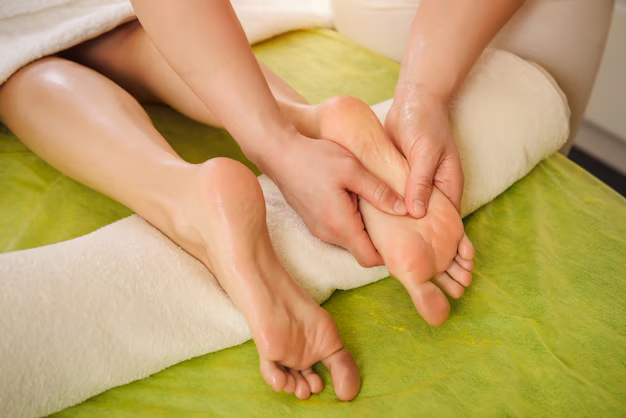Find Relief from Gout Pain: Practical Tips for Managing Discomfort
Experiencing the sharp, throbbing discomfort of gout can feel unbearable, leaving many in search of immediate relief. While gout primarily targets the big toe, its effects can extend to fingers, knees, and other joints, making daily activities challenging. Understanding how to alleviate this pain is crucial not only for comfort but also for maintaining your quality of life.
Understanding Gout: What Causes the Pain?
Gout is a type of arthritis caused by an excess of uric acid in the blood. This surplus can form sharp, needle-like crystals within joints, resulting in sudden and severe pain, swelling, and redness. Factors such as genetics, diet, and certain health conditions can increase the risk of developing gout.
What Triggers Gout Attack?
Common triggers include:
- Dietary Choices: High intake of purine-rich foods can lead to increased uric acid.
- Alcohol Consumption: Especially beer and spirits can raise uric acid levels.
- Medical Conditions: Obesity, high blood pressure, and certain medications can contribute to gout development.
- Health Management: Poor management of diabetes, kidney disease, and cholesterol can exacerbate the condition.
Immediate Steps for Relieving Gout Pain
When a gout attack strikes, immediate action can help alleviate pain and reduce the severity of the attack. Here are several steps you can take:
Rest and Elevate the Affected Joint
Rest is essential to prevent further irritation of the affected joint. Elevation can help reduce swelling by allowing gravity to assist in draining excess fluid from the area.
Apply a Cold Compress
Using a cold compress can help numb the area and reduce inflammation. Apply ice wrapped in a towel for 15 to 20 minutes at a time, ensuring you take breaks to prevent skin damage.
Hydration: The Underestimated Ally
Proper hydration is paramount in managing gout. Increasing your water intake can help dilute uric acid levels and promote its excretion through urine.
Why Hydration Helps
- Fluid Removal: Facilitates flushing out uric acid.
- Dilution Effect: Reduces the concentration of uric acid.
- Joint Health: Prevents dehydration of tissues and supports joint function.
Dietary Adjustments for Gout Management
Diet plays a significant role in managing gout. By making strategic dietary choices, you can significantly reduce the frequency and severity of gout attacks.
Foods to Avoid
- Red Meats and Organ Meats: High in purines which can increase uric acid production.
- Seafood: Particularly shellfish, anchovies, and sardines.
- Sugary Beverages and Snacks: Fructose can contribute to elevated uric acid levels.
Embracing a Gout-Friendly Diet
Incorporate these foods into your diet to help manage gout:
- Low-Fat Dairy Products: These can potentially lower uric acid levels.
- Cherries: Known for their anti-inflammatory properties.
- Vegetables: Especially leafy greens that provide essential vitamins without the purine load.
- Whole Grains and Nuts: Offering fiber and lowering cholesterol levels.
Establishing a Healthy Lifestyle
Apart from dietary considerations, other lifestyle changes can help manage gout effectively.
Maintain a Healthy Weight
Weight management reduces pressure on joints and can lower uric acid levels. Even modest weight loss can make a noticeable difference in gout symptoms.
Limit Alcohol and Sugary Drinks
Reducing your intake of alcohol and sugary drinks can drastically decrease uric acid levels, helping prevent further attacks.
Exploring Alternative Therapies
Besides traditional methods, some alternative therapies have shown promise in managing gout symptoms. It's important to approach these with an open mind while doing personal research.
Herbal Remedies
Certain herbs, such as turmeric and ginger, have anti-inflammatory properties which can be beneficial to those suffering from gout.
Acupuncture and Massage
These practices may help improve circulation and reduce tension around affected joints, potentially offering relief from pain.
Monitoring and Support
Continuous monitoring of your condition and reaching out for support can empower you to manage gout effectively.
Regular Check-Ups
Frequent medical evaluations can help keep track of uric acid levels and adjust lifestyle and treatment plans as needed.
Community and Professional Support
Connecting with support groups or seeking the guidance of healthcare providers can offer valuable insights and encouragement for managing daily challenges associated with gout.
Key Takeaways and Next Steps
Finding relief from gout pain involves a multi-faceted approach encompassing lifestyle changes, dietary adjustments, and proactive management strategies. Here’s a simple guideline to keep you on track:
- 🧊 Rest and Apply Cold: Use ice packs and elevate your joint.
- 💧 Stay Hydrated: Drink plenty of fluids to help flush out uric acid.
- 🍒 Choose Wisely: Opt for a diet rich in low-fat dairy, cherries, and vegetables.
- 🏋️♂️ Maintain Health: Aim for a healthy weight and limit alcohol.
- 🌿 Explore Options: Consider herbal remedies and therapies like acupuncture.
- 👩⚕️ Seek Support: Engage with healthcare professionals and gout communities.
By implementing these strategies, you can take a proactive role in minimizing the impact of gout on your life. Remember, each person's body reacts differently, and it may take time to identify which combination of approaches works best for you.
